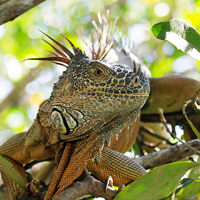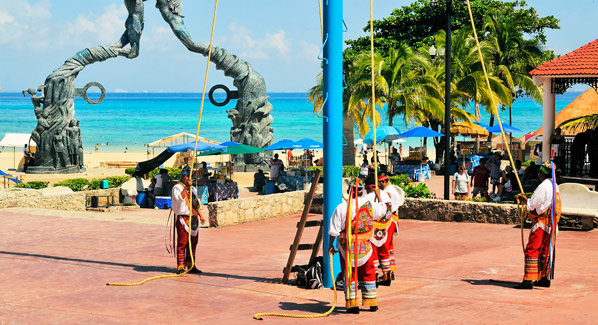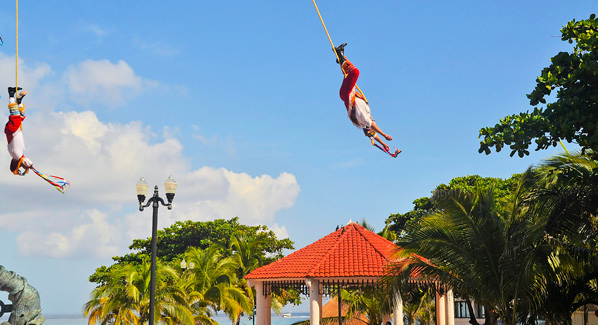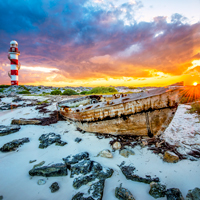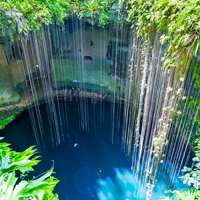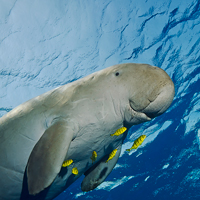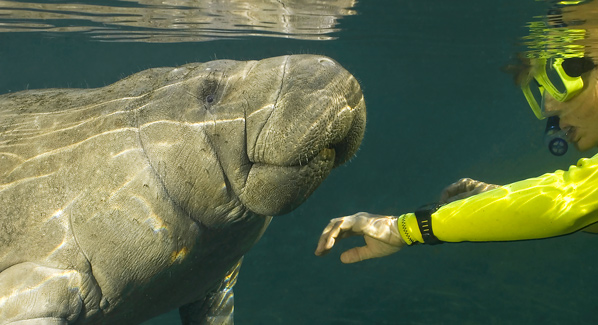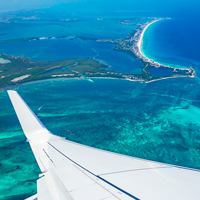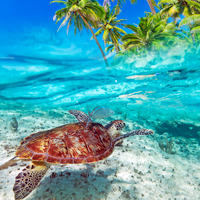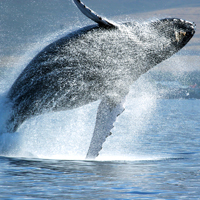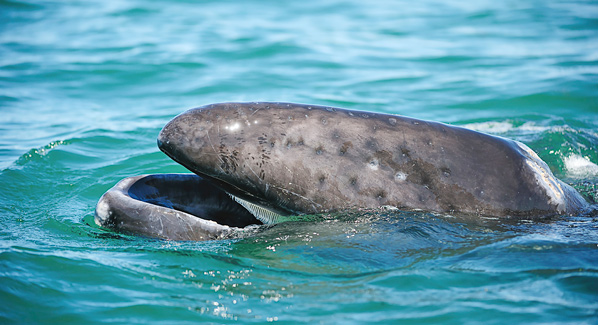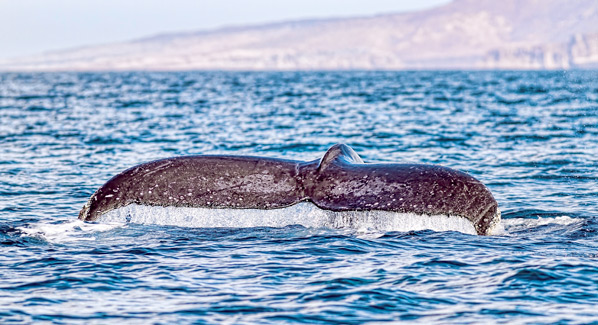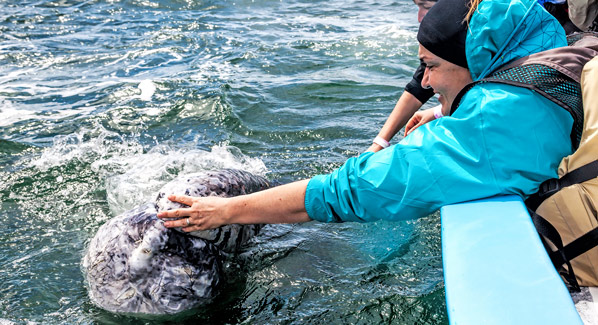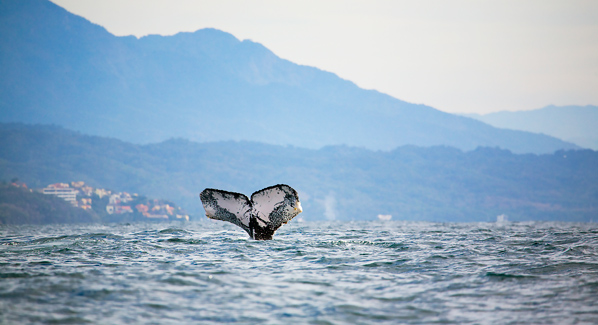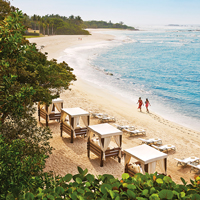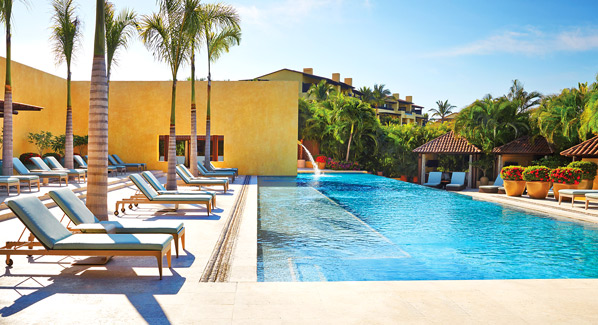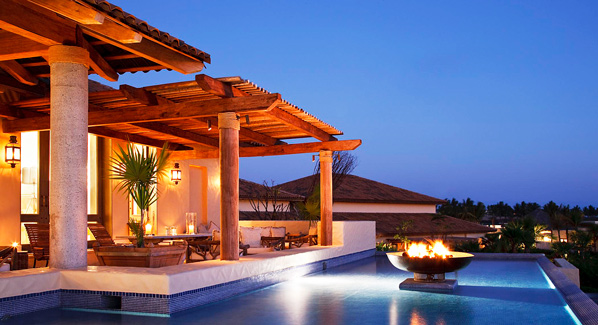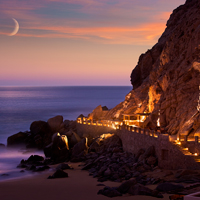Of the many fine resorts in the Cabo San Lucas area, a handful stand alone. These are the places that draw the rave reviews and extra stars in the guidebooks, and justify premium rates. They sit on the best beaches, command the most amazing views, feature the best restaurants and offer the highest level of personal service. Some welcome families and groups, others are best enjoyed as a couple, or even alone. No matter whether you are planning a quiet getaway or a celebratory splurge, one of these four top- ranked properties will fit the bill.
One & Only Palmilla
Baja’s original upscale escape has been hosting the elite and discrete since the 1950s. Now affiliated with the One & Only hotel family, this venerable landmark property is better than ever, thanks to a recent nine-figure renovation that left the familiar red-tile roofs intact, but touched most every other aspect of the resort. The feel is hacienda traditional, with whitewashed stuccoes, fountained courtyards and tropical landscaping. Interior upgrades are more obvious, and combine rich hand-carved furnishings and exposed- beam ceilings with warm-tone terracottas, granites and marbles. All accommodations feature ocean views, lavish bathrooms, separate sitting areas and private terraces with day beds and telescopes for spotting the whales that migrate just offshore.
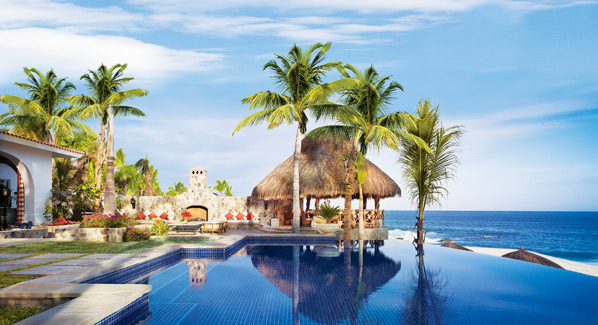
The One & Only Palmilla is Cabo’s original upscale getaway resort, and thanks to more than $100 million in recent upgrades, it remains one of the region’s premier properties. Photo: Barbara Kraft/One & Only
One quality of Palmilla that that hasn’t changed over the years is the resort’s ability to accommodate a wide range of guests. Those who want to relax in privacy can tap into private butler services and cloistered cabanas, or arrange for a private beachside dinner under the stars. But Palmilla also hosts its share of wedding parties and special celebrations, and is far more family friendly than other high-end properties in the area. There’s plenty to do on site, as the resort overlooks one of the area’s best beaches, and encompasses an acclaimed 27-hole golf course, four restaurants, spa, fitness center, two infinity-edge pools, tennis courts and a children’s club.
Las Ventanas al Paradiso
At the upper end of the resort spectrum, the experience is as much about the service as the amenities. Las Ventanas al Paradiso excels in both categories. Sitting on a private section of coastline half way between Cabo San Lucas and San Jose Del Cabo, and convenient to both, Las Ventanas offers a collection of suites and beachfront villas that blend privacy with views, and include intimate touches such as wood-burning fireplaces. Living quarters begin at 1,000 square-foot suites and range up to three bedrooms villas larger than the average home. Whitewashed stuccoes, native woods and cascading water elements set a tone that complements rather than competes with the magnificent sea views found at every turn.
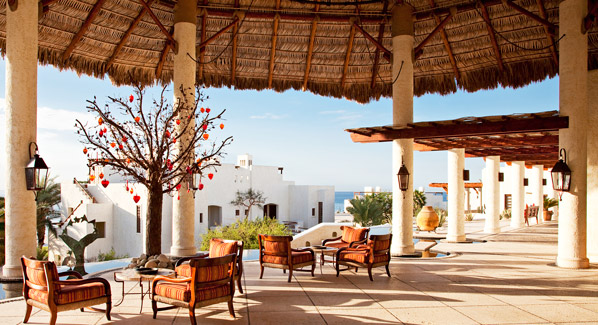
In a setting that highlights ocean views, Las Ventanas al Paradiso combines the comforts of spacious suites and beachside villas with an unrivaled focus on personal service. Photo: Blake Marvin/Las Ventanas al Paradiso
All the expected amenities of a five-star Rosewood property are in evidence, including fine dining, spa services and luxurious beach cabanas with private plunge pools and Jacuzzi tubs. What truly sets Las Ventanas above most other luxury properties in the region is an unrivaled level of personal and personable service. From the moment guest are greeted upon arrival, requests are not just met, they are anticipated, and the staff has perfected the art of providing warm, attentive interaction without overstepping the bounds of the service relationship. It is this human factor that creates the lasting memories, which continue to win this premier property top accolades from its guests.
Esperanza
Sink into the spa tub on your private terrace, watch the surf crash just below, and you might never want to leave your room. But should you get the ambition to go deep sea fishing, or heed the siren call of Cabo’s legendary night life, you won’t have far to go. Esperanza sits three miles up the coast from downtown Cabo San Lucas, which is just far enough to keep drive times short while providing ample insulation from the Medano Beach party scene. The resort commands its own stretch of waterfront, with rock bluffs bookending the compact beach, and also delivers spectacular cliffside views from the adjacent two-tiered infinity pool.
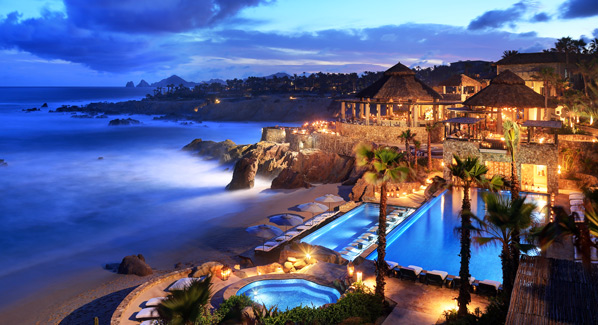
The Esperanza resort perches on a low rock bluff, with commanding views of the Sea of Cortez. A private beach is just steps away. Cabo San Lucas is a short cab ride to the south. Photo: Erhard Pfeiffer/Esperanza
Earth tone stuccoes, rough-hewn woods and thatch roofs set the tone for the 17-acre compound. Interiors continue the theme, creating an inviting atmosphere that delights, but also complements rather than distracts from the ocean views that await on the private outdoor terraces. All guest quarters are spacious, ranging upward from 900-square foot Casitas to four-bedroom villas, and the beachfront suites are literally a stone’s throw above the surf. Esperanza draws its share of A-list celebrities, who come for the same attentive yet professionally discrete service all guests will enjoy. The resort’s signature Cocina del Mar restaurant serves inspired seafood creations, and includes outdoor dining spaces that extend out onto the rock headland, placing diners right above the surf line. The on-site spa has also earned a reputation as one of the region’s best.
The Resort at Pedregal
On a side street near downtown Cabo San Lucas, a tunnel disappears into the hillside. At the other end of this chandelier-lit passage is a resort like no other. The Resort at Pedregal sits in isolated splendor on the west side of the peninsula, facing endless views of the Pacific Ocean. Every element of the architecture celebrates the location, from the outdoor tables of the cliffside El Farallón restaurant and the new cliffside Champagne Terrace to the private infinity-edge plunge pools that turn each private balcony into an extension of the seascape. Modern adobe, native rock and natural woods set earth tones that blend with and mirror the hues of beach and cliff, while interiors are warmed by browns and bronze tones, with in-room fireplaces and hand- crafted furnishings and fixtures. Especially luxurious are the spacious bathrooms, which include both open showers and stand-alone soak tubs.
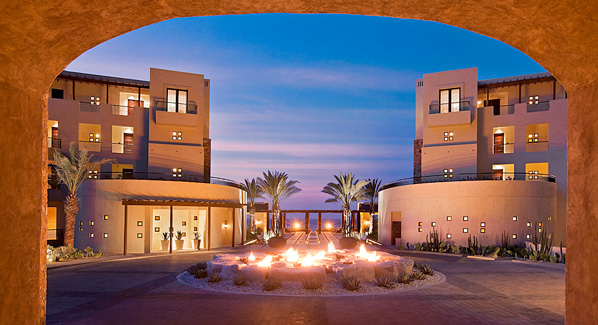
A fire pit greets guests arriving at The Resort at Pedregal. To reach this property from Cabo San Lucas, guest travel through a tunnel that leads to an isolated section of beach. Photo: Robert Reck/The Resort at Pedregal
The surf-washed beach is best enjoyed by strolling rather than swimming, but just yards away from the high tide line are two infinity-edge pools, which create the appearance of melding right into the waves. The larger of the two pools includes an enticing swim-up bar where one can order up a Margarita and a nosh of fresh guacamole seasoned by salt air. Other water elements on the grounds include a series of rooftop cascades, which feed a separate indoor/outdoor saltwater pool that extends into the treatment chambers of the Luna y Mar Spa. At the spa, one can indulge in a decadent range of soaks, scrubs and rubs, or tap into traditional Mexican folk healing arts, with treatments that include a spiritual cleansing by a native shaman.


